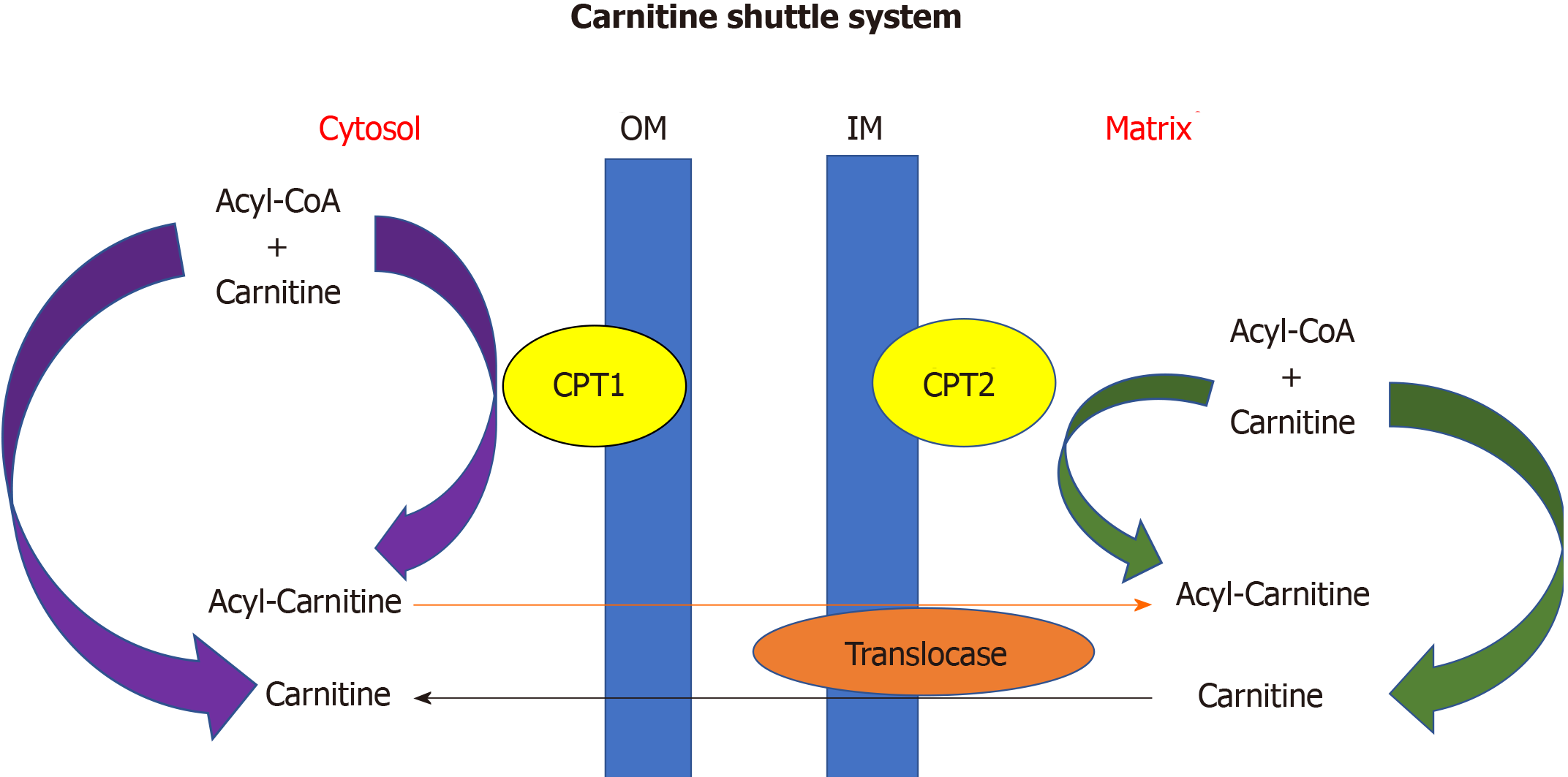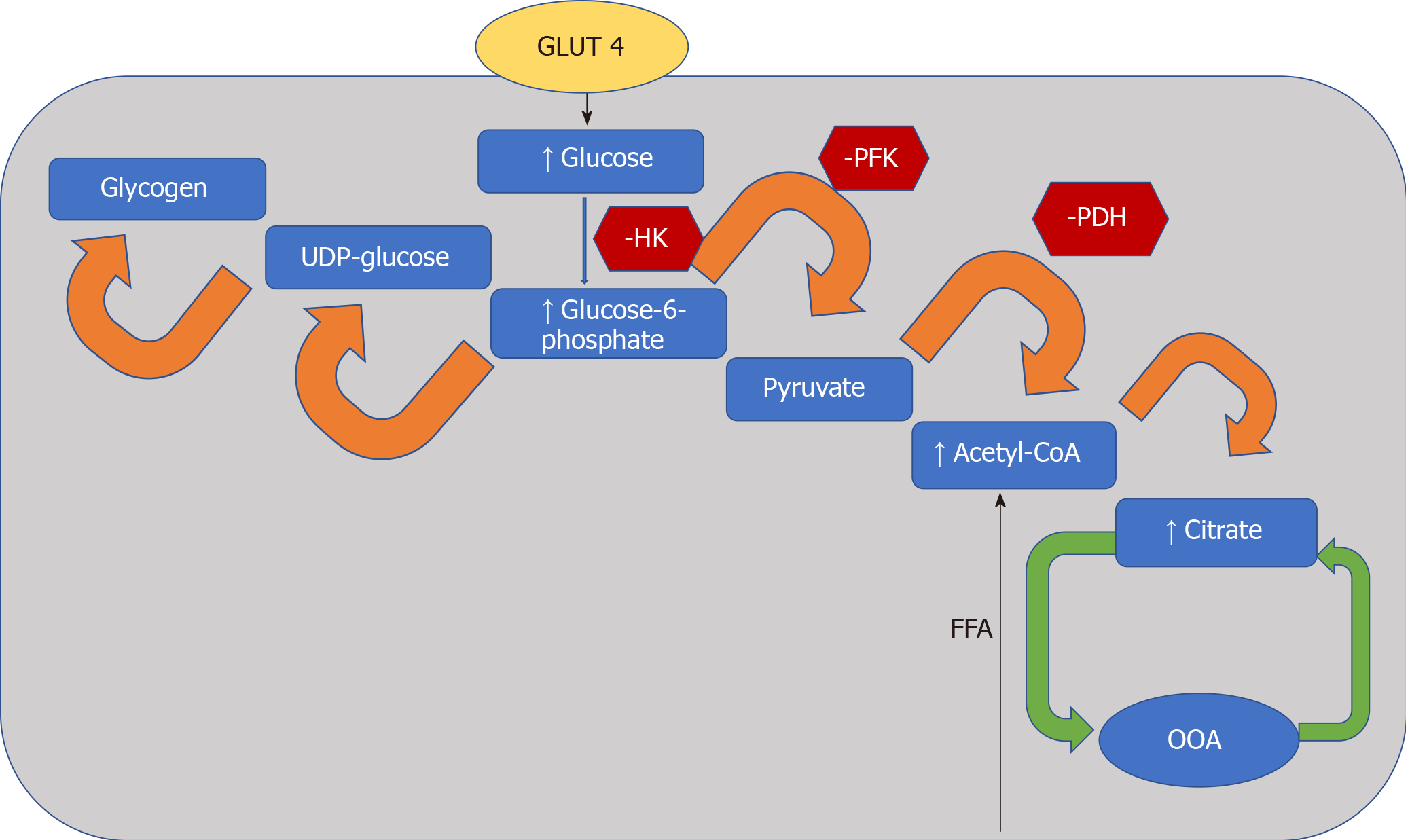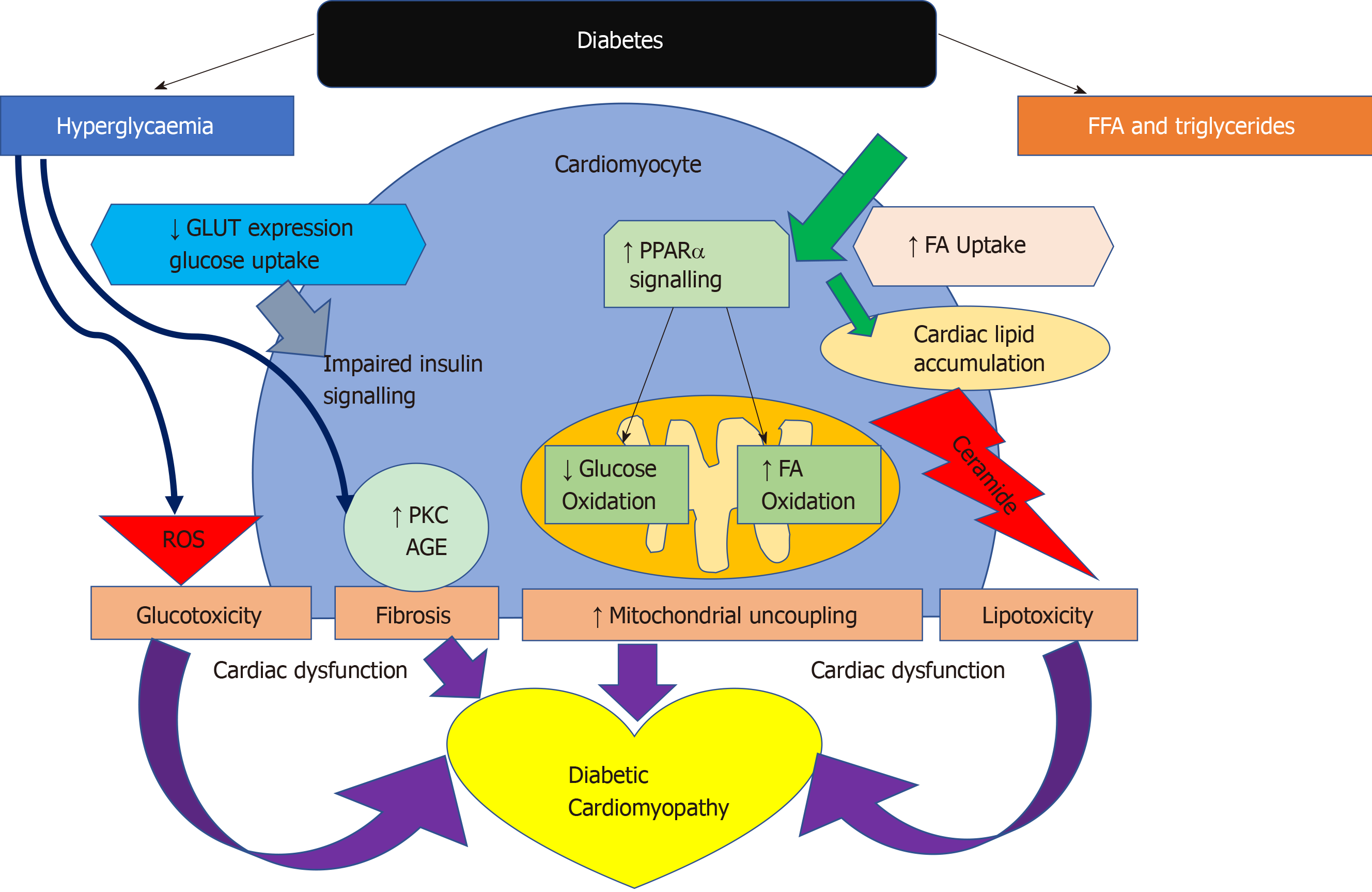Copyright
©The Author(s) 2019.
World J Diabetes. Oct 15, 2019; 10(10): 490-510
Published online Oct 15, 2019. doi: 10.4239/wjd.v10.i10.490
Published online Oct 15, 2019. doi: 10.4239/wjd.v10.i10.490
Figure 1 An overview of myocardial energy substrate utilization.
Fatty acids and glucose are the major substrates used for ATP generation. The pyruvate generated from glycolysis is metabolised within the mitochondria to produce the majority of carbohydrate-derived ATP while fatty acids undergo β-oxidation. The majority of myocardial ATP originates from the mitochondria via the Krebs Cycle. A preferential increase of activity in one pathway over the other can result in imbalances in substrate uptake and utilization by the mitochondria[151]. GLUT 1: Glucose Transporter 1; GLUT 4: Glucose Transporter 4; FATP: Fatty Acid Transport Protein; CAC: Citric Acid Cycle; ATP: Adenosine Triphosphate; CPT-1: Carnitine palmitoyltransferase-1; CPT-2: Carnitine palmitoyltransferase-2.
Figure 2 Carnitine shuttle system.
This summarises the role of carnitine in the mitochondrial oxidation of fatty acids; contained within Figure 1[152]. CPT-1: Carnitine palmitoyltransferase-1; CPT-2: Carnitine palmitoyltransferase-2; OM: Outer mitochondrial membrane; IM: Inner mitochondrial membrane.
Figure 3 Randle cycle.
The glucose-fatty acid (Randle) cycle in muscle. Oxidation of fatty acids inhibits pyruvate dehydrogenase. Citrate inhibits phosphofructokinase. The rise in glucose-6-phosphate inhibits hexokinase[153]. FFA: Fatty acids; HK: Hexokinase; PDH: Pyruvate dehydrogenase; PFK: Phosphofructokinase; UDP: Uridine diphosphate; GLUT 4: Glucose transporter 4; OOA: Oxaloacetic acid.
Figure 4 Pathways of cardiac dysfunction leading to diabetic cardiomyopathy.
Pathways leading to the development of diabetic cardiomyopathy[154]. AGE: Advanced glycation end products; FA: Fatty acids; FFA: Free fatty acids; GLUT: Glucose transporters; PKC: Protein kinase C; PPARα: Peroxisome proliferator-activated receptor alpha; ROS: Reactive oxygen species.
Figure 5 Major cardiovascular outcome trials using GLP1 receptor antagonists.
Figure 6 Major cardiovascular outcome trials examining SGLT2 inhibitors.
- Citation: Athithan L, Gulsin GS, McCann GP, Levelt E. Diabetic cardiomyopathy: Pathophysiology, theories and evidence to date. World J Diabetes 2019; 10(10): 490-510
- URL: https://www.wjgnet.com/1948-9358/full/v10/i10/490.htm
- DOI: https://dx.doi.org/10.4239/wjd.v10.i10.490














